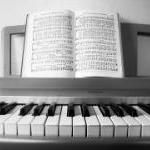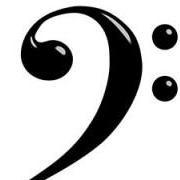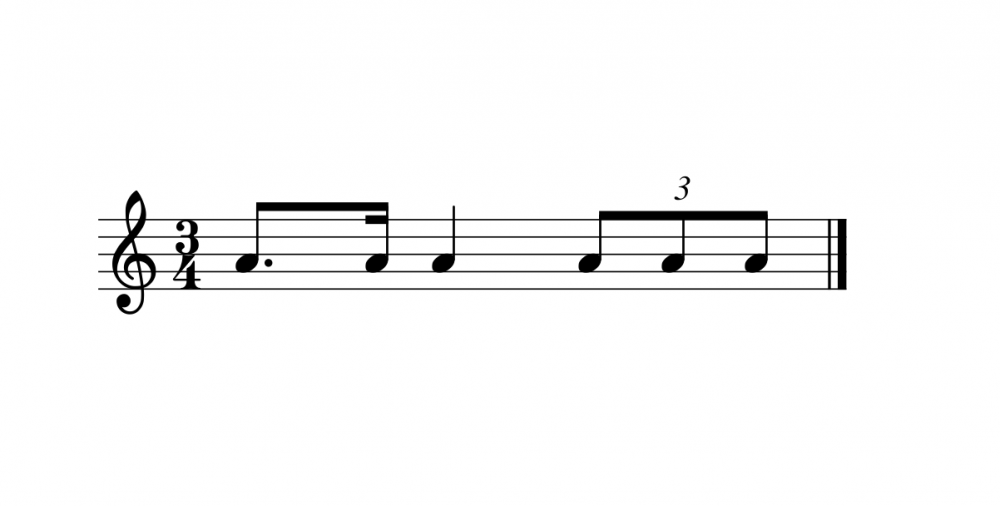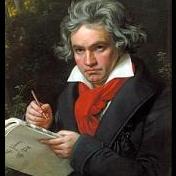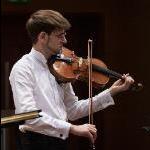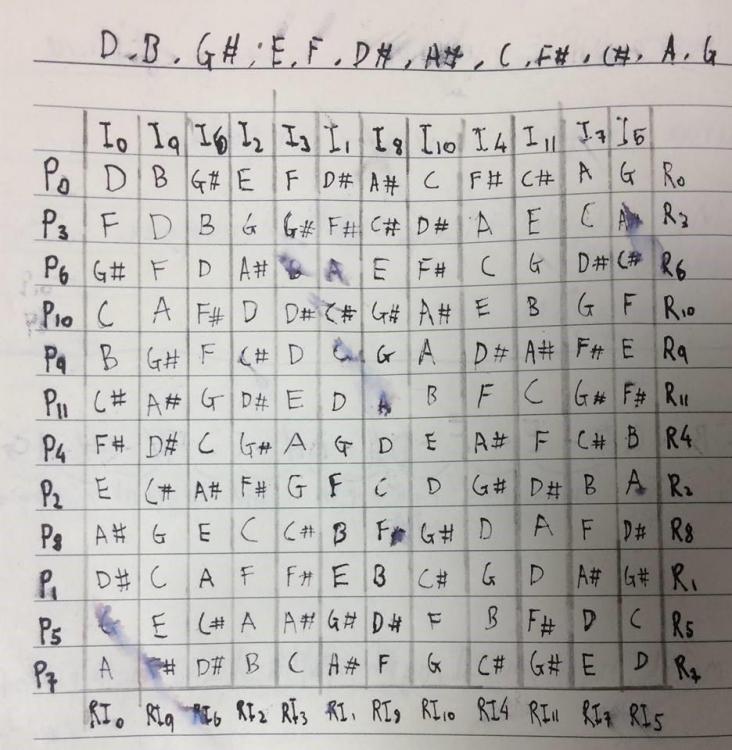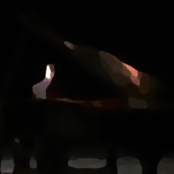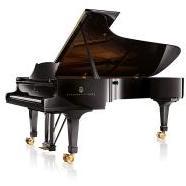Search the Community
Showing results for tags 'trio'.
-
Hi, this is a side piece that I've worked on whilst I work on the revision for the Alula Variations (I love doing reworks on a 30 mins piece's score hahaha....). I chose bassoon and flute because I kinda wanted to write a chamber piece and write for bassoon. I also like the vibe of the OST. So yeah, hope you enjoy!
-
The audio is really bad but it's whatevs. The crescendos and decrescendo are supposed to be more subtle and gradual than those in the audio. m.14 is supposed to be a sudden drop in dynamics and m.26-27 is supposed to rise and fall evenly but dramatically. I apologize for the audio its pretty bad. The last sonority is badly balanced and blended in the audio but eh idek at this point. My first composition i fully wrote and am sharing! currently working on a wind ensemble piece so look out for that if you liked this. Welcome to feedback and criticism. I would also any tips relating to composing, online notation software (i use flat.io), or DAW, etc. Thanks! -J Green.xml
-
Hey, it's been a minute I wanted to experiment writing something Canon-esque, drawing inspiration from Canon in D. It's written in ternary form, with the A section in Eb major, the B section in Bb major (with some minor moments) and returns back to Eb major for a repeated A section. It's very basic, and no where near performance ready, but I've been on this site for a while, but afraid of composing, so I guess this is my plunge lol. Upon review, I have noticed some technical errors, but this was just for fun and to get my feet wet and I just wanted to get some feedback. Thank you
-
Attached is the third movement of my piano trio. (yes completed before the second) I'm quite pleased as I wrote it very quickly for my standards. It's in minuet and trio form and is very short. please leave any thoughts down below.
-
This is a piece i made in my free time, i was experimenting with different instruments and forms, as such it's more of an educational composition. Any critique feedback appreciated. youtube link:
-
So, I have finished my first minuet and trio for solo piano. Hope you like it :3. I added an harmonic analysis (very roughly). Any comments are apreciated :3. Almost all the minuet is based on this motive.
- 9 replies
-
- 1
-

-
- a major
- piano solo
-
(and 3 more)
Tagged with:
-
Winter is such a beautiful season. I composed a piece inspired by it for a trio. Not your typical trio though. Rather, I composed it for flute, violin, and piano. I think these instruments best fit winter, since the flute provides a mellow quality, the violin provides fullness, and the piano, well it sounds good with just about every existing instrument. My piece represents the joy that winter brings. I might later expand on this piece, but right now, it is a dance piece for a trio inspired by winter. I started thinking about this piece about a week ago when I saw snow falling. Because it represents the joy of winter, I decided to write it in E major, one of the most joyful major keys. There is a short C minor moment in there but very quickly a Picardy Third resolves the tension of the C minor into the relaxation of C major. There are a few passages for the flute that essentially amount to a measured cadenza(virtuosic like a cadenza, but with specific note values). When the key signature changes to 1 sharp, what proceeds essentially amounts to a development section primarily based on the B section(the section with the pizzicato). Right before it changes back to 4 sharps, I do a sudden modulation from C major to E major. The coda is short but provides finality to the piece that I don't think would have existed had I just straight up ended with the last measure of the A section. There are a few moments where only 1 or 2 instruments are playing, but for the most part, the whole trio is playing. What do you think of my winter piece?
-
This is my first composition I wanted to put on here, and my first one I will count (All the others were either practice, arrangements, or incomplete and I wasn't comfortable counting them). So I guess this my Op. 1! It is for Flute, Clarinet in Bb, and Trumpet in Bb. It is very short, but I feel it's pretty okay for me atleast. I tried to make the trumpet stand out so I put the trumpet melody in Bb first, then Eb, then in G twice. For the final trumpet melody, I made the Clarinet and Flute switch from F to G major for a nice ending.
-
I know I accepted that challenge to arrange a Romantic Period symphony that isn't by Beethoven. However, I am finding it quite challenging to both get across the essence of the symphony and not get dangerously close to the original orchestra. In particular, I am finding woodwinds becoming of more importance to that essence. I guess I could resort to a quartet of pianists if I have to, but while I try to figure out both what symphony to arrange and what ensemble to arrange it for, I figured I would do another one of my expansion type arrangements, where I take a piece for a smaller ensemble and arrange it for a larger ensemble. Besides the obvious Classical Period Trifecta, I figured that maybe I could arrange a piece by a later composer. Liszt was definitely out of the question(only piece by Liszt that I think would be suitable for an arrangement is his Liebestraum, and even then, just barely). I knew a lot of composers after Beethoven, both by names and pieces. I further narrowed things down to these composers: Chopin - Melodic grace Grieg - Piano works are well known Tchaikovsky - What looks complicated can turn out very simple(I know this from arranging The Nutcracker Suite for Piano Duet) Mendelssohn - He is like "The Mozart of the Romantic Era" Schumann - Melodic grace Brahms - Similar but clearly different style from Beethoven Debussy - Melody first, harmony second, even the harmony tends to be melodic in nature I then thought "Hmm, maybe I should arrange Reverie" and that sealed the deal. I was going to arrange a piece by Debussy. When people think Debussy, they think Clair De Lune, which I did look at, but decided not to arrange. I looked at other well known Debussy pieces and the one that looked easiest to arrange is Reverie, which also happens to be my favorite Debussy piece. So I decided to arrange that piece. I figured that a trio would fit very well to the piece. I wanted to keep that tender character of the original piece obviously. One instrument that I commonly use to soften a small ensemble like a trio is a flute because the flute, even at forte, still has a tenderness to its timbre. So I figured that the flute should take the main melody(except when that melody goes into the bass clef obviously), the cello should play the bass line, and the violin should harmonize the flute melody. So here is my arrangement of Reverie, what do you think?
-
I'm still not satisfied with my counterpoint, so I wrote these two little practice pieces. They're not mentioned for any instruments, but I had to choose something when making an mp3. Also, this is my first finished canon, that is I've written many canonical passages but this is my first standalone finished canon :D What do you think of these?
- 2 replies
-
- counterpoint
- canon
-
(and 1 more)
Tagged with:
-
**Re-uploaded due to file attaching issues** A piece written for a composition assignment. This piece is 12 tone and I have attached the tone row matrix I was working from. This is how I submitted it but I have a few issues with the tempi in certain parts as well as the general form. All feedback welcome ☺️
- 1 reply
-
- flute
- cor anglais
- (and 4 more)
-
Hey, guys! I’ve taken a bit of a break from the site, but I want to share some of my music with everyone. This is a “novella” for flute, clarinet, and bassoon, so termed in reaction to the narrative quality of the piece, as well as the episodic vignettes that occur throughout the work. I finally feel more comfortable with my own, personal style and musical voice, and I am quite pleased with the result. I would love to hear your feedback on what you hear – e.g. the difficulty, the duration, the technique involved, etc. – so that I might be able to thoroughly improve the piece (especially since I am always learning)!
-
It is often said that Brahms was a master of the piano trio. What makes him masterful? Do you have any tips for writing a piano trio? How should I use the different instruments?
-
This is my piece Steps to Follow. It is based off of a percussion piece that I found a while back called "Fractalia" by Owen Clayton Condon. I really like the echo pattern that he established in that piece, so I decided to play around with it and make a piano peice based off of it. I personally enjoy the sound of it and like how it turned out, but I am always looking for feedback/criticism, so please let me know what you think. Thanks 🙂 Note: The score is kind of a mess lol. At the time of finishing/uploading this it is really late, and I just could not bring myself to clean it up or try to fight Sibelius over organizing it.
-
Trio in B-flat for Viola, Violoncello, and Contrabass I. Allegro spiritoso II. Adagio e sostenuto III. Menuetto: Allegro IV. Allegretto Composed: February 22 - May 26, 2014 Style: Classical, circa 1790 Though conceived as a mere amusement, this work ended up being for me an intensive study on how to handle a group of low-register instruments effectively in a chamber ensemble. Works for this very unusual instrumentation are exceedingly rare, as one may imagine, probably because of the challenges I faced in writing my own piece. Achieving clarity in an ensemble with so much bass sonority was rather difficult, but I believe I achieved it to some degree. Fortunately the players for whom I was writing it made the job easier. This trio was originally written for myself, a friend (an excellent ‘cellist), and my ex-boyfriend (a fine bassist) to play just for fun. This is one of several chamber works featuring the contrabass that I wrote with my ex-boyfriend in mind, and I learnt a lot about the capabilities of the instrument from writing them (I had never been much interested in the contrabass in chamber ensembles before I met him, but listening to him practice difficult passage work I would never have thought possible on the instrument fascinated me, besides which, affection prompts us do things we wouldn’t otherwise have the inclination to do). Both of the other players are better technicians than I am, so I was able to write parts for them that were somewhat demanding. The viola part I wrote for myself was also challenging for me, but carefully within my skillset, so all the parts are fairly equal. Description: The first movement (Allegro spiritoso), in Sonata-Allegro form, opens with a bold, vigourous 4-measure theme for all the instruments in unison, sweetened by a more lyrical melody in the ‘cello before being repeated. A transitional section follows, featuring the contrabass in sweeping scales and arpeggios, which modulates to the dominant of the dominant key, C major; the second theme, somewhat unusually, begins in C, with the ‘cello and ‘bass harmonizing in 10ths, and makes its way to the dominant key of F a few measures later. After a short codetta, the exposition is repeated, with the main theme slightly altered here and there. The development treats snippets of the main theme contrapuntally before modulating back to the tonic key for recapitulation. The second movement (Adagio e sostenuto), in binary form, is in the subdominant key of E-flat, and begins with a simple but expressive theme, which gives way to a transitional section led by the ‘cello. A more rhapsodic second theme follows with the viola and ‘cello harmonizing in 3rds and 6ths, accompanied by the ‘bass. The A and B themes are repeated, all in the tonic key, and coda based on the A theme closes the movement. The third movement (Allegro) is a Menuetto based on a 5-note motive that is repeated and developed throughout the main section of the movement. The contrasting Trio section, in the movement’s dominant key of F, is based on a sprightly theme characterized by leaps of 5ths and 6ths up and down. The main section is then repeated (Da Capo). The fourth and final movement (Allegretto), in Rondo form, begins with a somewhat droll “A” theme, which is then developed during a transitional section. Just when one expects the “B” theme to enter, a short fugato on a new subject is introduced, which leads into the actual “B” theme in the dominant key of F - humourous, and characterized by accented syncopations and sudden changes of dynamic. After a brief codetta, the “A” theme returns abbreviated, followed by a lyrical “C” theme. The “A” theme returns again, followed by yet another short but different fugato on the same subject as before, and the “B” theme returns in the tonic key. A variation of the “A” theme returns a final time, and a humourous and spirited coda ends the movement. This work was premiered in July 2014 by the ensemble for which it was written, at a cojffeehouse in Wichita, Kansas (where I was living at the time) which often features live music of all sorts, and was warmly received by the audience of patrons sipping coffee or having breakfast. Alas, the nature of the venue precluded a live recording being made - there was a fair amount of background noise as beverages and food were being served. Inasmuch as I have heard this work performed effectively, and I know it works, I have few concerns, but I am open to suggestions, comments, and criticisms as always. Players’ and Audience Comments: The players enjoyed playing the piece, and when I suggested a performance as part of the ‘cellist’s regular solo set at the coffeehouse, all were in agreement. The bassist, himself a fine composer as well as a university music theory teacher, was somewhat critical of the ‘bass accompaniment of the second theme in the slow movement because it didn’t seem like a characteristic period bass line, but that was the only criticism I received. The audience members made few comments other than to congratulate me. To my surprise, no one seemed even vaguely bemused by my choice of instrumentation, which I took as further evidence that I had made it work effectively. I did receive one criticism from a friend who frankly told me he hated the piece, saying that it was devoid of any treble sonorities and far too dark to be pleasant, but his was the only such comment. I hope you enjoy this rather unusual work! Cheers!
-
Divertimento a 3 in B-flat, for 2 Violins and Violoncello I. Allegro di molto II. Andante III. Allegro giusto, alla breve Composed: April 4-17, 2017 Style: Classical, circa 1790 I enjoy spending my lunch hours at work productively when I have the energy, sketching or doing exercises. A couple of weeks ago I started a counterpoint exercise that I worked on for the next couple of days, and it turned out well. The thought occurred to me that perhaps it might serve as a movement in a larger work, in which I might also use some old ideas that had been waiting around in the back of my mind for years, and the idea for this little divertimento was born. Most of this work was written by hand while lunching in my car. The term divertimento denotes a multi-movement work that is light in character, for the diversion or amusement of the audience or players (or both), as the name implies. This one is in three movements, and is modeled after similar works I have played and heard by Joseph Haydn (1732-1809). It is quite short, much like Haydn’s examples, lasting just under 10 minutes. Description: The energetic first movement (Allegro di molto), in sonata-allegro form, is dominated by a dynamic 4-measure opening motive that I have had in my mind for many years, which I found opportunities to develop throughout the movement. The contrasting second theme, smoother and calmer than the first, is stated canonically by the two violins, accompanied by a chromatic accompaniment figure in the ‘cello adding harmonic complexity. The opening theme is then restated and developed into a codetta to close the exposition, which is then repeated. The development section treats part of main theme in close canon, modulating to distant keys to develop the second theme before making its way back to the tonic B-flat for the recapitulation, and the movement ends with a short coda, again based on the opening theme. The second movement (Andante), in the subdominant key of E-flat, is in the simplest of binary forms (ABAB), and begins somewhat statically, setting a mood of calm to contrast with the verve of first movement before gradually becoming more florid and interesting starting in m. 6. The second theme is a pretty melody I have had in the back of my mind for at least 30 years, patiently waiting for the right application, and now it has a place at last. The second time it comes around, the eighth note accompaniment is changed to sixteenth notes for variety. The movement closes with a very short coda, a varied restatement of mm. 11-12. The third and final movement (Allegro giusto, alla breve), originally conceived as the aforementioned counterpoint exercise, is a light-hearted fugue in an Italianate style, on an original 6-measure subject reminiscent of Handel. There are four statements of the subject by each of the instruments, including statements in stretto and an inverted statement, interspersed with episodes developing foregoing material. The movement closes with a coda based on the rhythm and contour of the last measure of the subject, on a pedal B-flat in the 1st violin and ‘cello alternately, ending in a plagal cadence. Concerns: 1st Movement – I’m a little worried that perhaps I have overdeveloped the opening motive by repeating it too often, even if I vary it – particularly the four chords at the beginning of it. I’m open to the idea of reworking the movement slightly if I get a lot of feedback that this is a problem. I love developing themes, but I want to avoid monotony. 3rd Movement – I’ve been writing counterpoint as a serious avocation for years, having listened to a lot of it and read several books on the subject. I even authored the very popular “Fugue Crash-Course” here before I knew as much as I know now, yet I still feel insecure and mystified. I try to proceed confidently, but since I have taught myself everything I know, I constantly worry that I’m making mistakes out of ignorance. It has happened before several times. I want to make sure what I’m doing is “by the book,” so if any of you notice anything in this fugue that you know for certain is wrong or mishandled, I want to know about it. I hope you enjoy this little piece, and thank you for your kind attention.
- 4 replies
-
- divertimento
- trio
-
(and 2 more)
Tagged with:
-
Divertimento a 3 in F, for 2 Violins and Violoncello I. Allegretto grazioso (3/8) II. Andante (2/4) III. Allegro giusto, alla breve (cut time) Composed: 2011 Style: Classical, circa 1790 This work is the first of two such divertimenti for this instrumentation I have composed to date, the second of which having been written and posted here just recently. I consider it one of my more charming and attractive works – a personal favourite – and among my most ingenious, a tour de force of development and counterpoint (of which I am very proud) without being obvious about it. One hardly realizes that motives are continually being developed throughout both the first and second movements, in as unassuming a manner as possible. It is in three movements, and lasts 10-½ minutes. Description: The first movement (Allegretto grazioso), in Sonata-Allegro form, opens with a lilting, graceful theme of rising steps that ascend the scale in slurred pairs, followed by a series of descending scales in skittering triplets, and a few “sighing” gestures, that together I feel form one of my prettiest melodies. From it are then extracted the following three discrete motives that are developed almost constantly throughout the movement: The playful second theme contrasts with the elegance of the first before a pair of turns and a florid cadence transform it into something more refined. The development section further explores the possibilities of the various motives around a central sequence, and culminates in a rising and falling series of coupled steps (motive 1) on a pedal tone that brings the music to a very satisfying return of the opening theme in the recapitulation. The second movement (Andante), in binary form, is in the subdominant key of B-flat, and opens with a coquettish theme from which, as in the first movement, are extracted the following two discrete motives that are developed elsewhere in the movement: This theme is then repeated in the tonic minor, and through a surprising modulation makes its way to the movement’s dominant key of F. There is no second theme per se, but rather a contrapuntal development of the foregoing motives. The third and final movement (Allegro giusto, alla breve) is a rollicking, rather wacky fugue (how often does one hear those words together?) on a jaunty subject, beginning on a syncopation, and characterized by an unexpected, dissonant suspension, accented sforzando for humourous effect. The bass line to the subject, introduced in the ‘cello, is worked canonically into the entire exposition as if it were a second subject; hence the exposition functions much like a double fugue, though it doesn’t continue that way. I didn’t take the construction of this fugue too seriously (this was not a counterpoint exercise in earnest), being more interested in keeping it light and quirky; and although the subject begins on the fifth degree of the scale, I decided against the pedantic complexity of devising a tonal answer in the exposition – though otherwise it proceeds conventionally for the most part. Passing dissonances run rampant, and transitions and modulations are often purposely abrupt, taking unexpected turns intended to raise eyebrows, and a smile or two. After a final sequence on a pedal tone and a truncated statement of the subject, even though it feels like the movement should continue, in a rush it throws itself headlong to a sudden, crashing finish as if it hit a brick wall at a run. This is probably the oddest piece of counterpoint I’ve ever written, but I feel the jocular treatment of what is usually by its nature a serious form contrasts well with the sunny warmth and charm of the previous two movements. Premiere: This work was premiered in July 2016 by members of the Octava Chamber Orchestra, a community orchestra in the Seattle, Washington area, as part of a unique concert of Baroque and Classical music by living historicist composers. Although I regret I could not attend the performance, I did receive the recording of it that I have posted here below. The outer movements are played a bit too slowly, and there are some mistakes and inaccuracies; but I’m gratified that the players took the piece seriously and made a sincere attempt at a sensitive interpretation. Overall, it’s one of the better performances I’ve ever received, and I’m quite pleased (to say nothing of being honoured, and very fortunate). Musicians’ and Audience Feedback: My contact with Octava, who played 2nd Violin at the premiere, told me that the musicians loved the piece. Though they found it somewhat challenging here and there, they said it was well written for the instruments and a real pleasure to play, just as I had hoped; divertimenti are supposed to be fun! It was the first work on the programme, and was very warmly received by the audience. Thank you for your kind attention, and enjoy!
-
To celebrate this day, I've been working on this piece. It's a big canon in prolation. It's not a live performance, so the slurs are for expression (for the software to do them).
-
Prelúdio e Fuga (SAT).mp3 This is a Prelude and Fugue for recorder trio (soprano, alto and tenor). I composed it for a trio (which was a quartet, but one person gave up) I would take part in, but then the whole group "ceased to exist" without a single rehearsal with everybody (= 3 people). The Prelude and Fugue continues to existe, but now without a concrete destiny. Hope you enjoy^^ OBS: I changed the VST to flutes because Garritan's recorder sound is a scream of pain from hell. OBS2: I didn't put dynamics, articulations or anything else because I'm lazy.
-
This was my final composition project for last year! The 7(/4) time signature was chosen from the beginning; being the number of days in the week it is meant to symbolise the repetitiveness of life during boring times, when every day feels the same: we feel trapped in the same dream -- everyday. No sadness, no happiness. Just a dream. We feel trapped, we try to escape, we get increasingly desperate... But in the end we all fall back down into our prison. The audio was recorded live -- I am the pianist; the performance was ill-rehearsed (we had very little time) and the higher-quality camera/micro ran out of storage mid recording so I had to upload the low-quality one :P Anyway, please don't get mad at anything different from the score or any mistakes or fumblings (there are many ). Any feedback welcome!! PS: the slurs were meant as phrase markings, not bow slurs. Violin and viola - Richard Tomes & David Wyn Lloyd, teachers at the Academia de Música de São João da Madeira, Aveiro, Portugal.
-
here is a piece for two violins and one cello. thoughts, feedback, and ideas welcome. trio_no._1.mid
-
Here's the third and final movement to my trio for guitar, bass, and harmonic series keyboard. Please have a listen and leave any comments, feedback, and criticism as all the feedback I've received has been very valuable so far. Above all, I hope you enjoy it.
- 8 replies
-
- guitar
- bass guitar
-
(and 4 more)
Tagged with:


